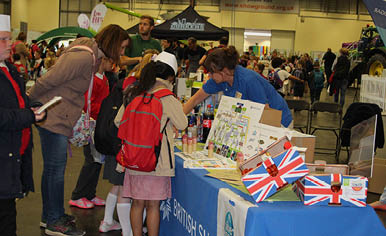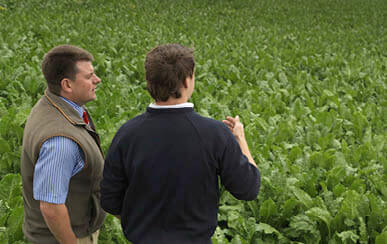
Environmental
Case study
ENVIRONMENTAL: CONSUMING RESOURCES RESPONSIBLY
20 May 2019
Ely Nature-Friendly Farming Zone

Ely Nature- Friendly Farming Zone
Keen to demonstrate that food, farming and wildlife can all be winners in the Fens a group of Cambridgeshire and Norfolk farmers have got together to share the ways they practice nature friendly farming with the public. They also seek to improve what they do, by learning from each other and the latest research.
Set up in 2018 the growing group now has 22 member farms and forms the ‘Ely Nature-Friendly Farming Zone. To join the zone, each farm must pledge at least 3% of their land to specific birds, bees and wildlife friendly farming practices such as sowing nectar and pollen strips and Winter wild birdseed plots. But it doesn’t stop there, most of the members have much more than 3%, with some nature-friendly farmers in the zone having more than 20% of their land managed specifically for wildlife. This includes things such as;
• digging new ponds, scrapes and reedbeds,
• planting hedges and beetle banks,
• leaving fallows, bare plots and overwintered stubbles for skylarks and lapwings,
• putting up birdboxes, and
• providing extra food in winter.
At the same time each farm is producing good quality, sustainable food such as potatoes, salad, vegetables, bread wheat and sugar beet which becomes bags of homegrown Silver Spoon sugar.
The combined efforts make for some impressive results with around 15,000 Hectares (or rugby pitches) currently within the Zone and this number is growing all the time.
In their first year the group has been highlighting the ways in which they help seven key species who thrive in the Fens - Water Voles, Barn Owls, Corn Buntings, Bewick’s Swan, Lapwings,Turtle Doves and Bees.
Commenting, Tom Clarke, a sugar beet grower based near Ely said: “What’s really helping make this work is the fact that we’re working, learning and spreading the word together. A lot of farmers are already protecting the environment individually, by doing this together we can have a much bigger impact and make a much bigger difference”.
Spotlight on the Bewick’s Swan
Length: 1.2m
Wingspan: 1.9m
Weight: 5-7kg
Average lifespan: 9 years
Bewick’s Swans arrive in the UK from Siberia around October and leave again in March.
The smallest of the UK swans, they are relatively easy to identify as they have a very distinctive black and yellow pattern on their beaks.
On their visits they spend their days in East Anglia, the Severn Estuary and Lancashire feeding on left over sugar beet tops, which give them vital energy to build up their reserves for the 3,000 mile flight back to Siberia. They also feed on left over potatoes and grain. At night time they roost on open water.
The European Bewick’s are on the Red List of Endangered Species so providing these habitats for them is extremely important.






